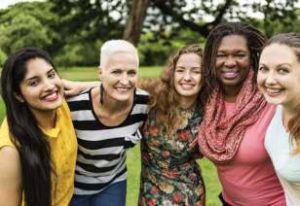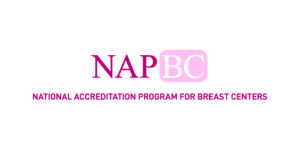 Not everything you may hear or read about breast cancer is true. Dr. Michelle Price, breast imaging specialist at the Fortunato Breast Health Center, helps set the record straight on 10 common myths.
Not everything you may hear or read about breast cancer is true. Dr. Michelle Price, breast imaging specialist at the Fortunato Breast Health Center, helps set the record straight on 10 common myths.
Myth: Finding a lump in your breast means you have breast cancer.
Dr. Price: More than 80% of breast lumps are not cancer. But if you discover a lump in your breast or notice any changes in breast tissue, it should never be ignored. It is very important that you see a physician for a clinical breast exam and, if recommended, a mammogram and breast ultrasound.
Myth: Breast cancer always forms a lump.
Dr. Price: Most people know that a lump in the breast may be a sign of cancer. However, there are other warning signs of breast cancer, including a change in the look or feel of the breast, a change in the look or feel of the nipple, or nipple discharge. You may not have a palpable lump at all.
Myth: Men do not get breast cancer.
Dr. Price: Each year it is estimated that approximately 2,190 men will be diagnosed with breast cancer and 410 will die. Breast cancer in men is usually detected as a hard lump underneath the nipple and areola. Men carry a higher mortality than women do, primarily because awareness among men is less and they are less likely to assume a lump is breast cancer, which can cause a delay in seeking treatment.
Myth: If you have a family history of breast cancer, you are likely to develop breast cancer.
Dr. Price: While women who have a family history of breast cancer are in a higher risk group, the majority of women with breast cancer have no family history. Statistically only about 10% of individuals diagnosed with breast cancer have a family history of this disease.
Myth: If the gene mutation BRCA1 or BRCA2 is detected in your DNA, you will definitely develop breast cancer.
Dr. Price: According to the National Cancer Institute, not every woman in families that have BRCA1 or BRCA2 mutation will inherit it. Also, not every cancer in such families is linked to a harmful mutation in one of these genes. Furthermore, some women who have the BRCA1 or BRCA2 mutation never develop breast and/or ovarian cancer. Women who have the harmful mutation in BRCA1 or BRCA2 are about five times more likely to develop breast cancer than a woman who does not have such a mutation. Therefore, if you have the mutation, develop a plan with your physician on how to deal with it and carry out that plan.
Myth: Young women don’t get breast cancer.
Dr. Price: The truth is all women are at risk of breast cancer. Although rare, young women can get breast cancer, even in their 20s. However, fewer than five percent of all breast cancers diagnosed in the U.S. occur in women under 40.
Myth: Antiperspirants and deodorants cause breast cancer.
Dr. Price: Researchers at the National Cancer Institute are not aware of any conclusive evidence linking the use of underarm antiperspirants or deodorants and the subsequent development of breast cancer
Myth: There is nothing you can do to lower your risk of developing breast cancer.
Dr. Price: Lifestyle and environmental factors can have an impact on breast cancer risk. To keep your risk as low as it can be, maintain a healthy weight, exercise regularly, and limit the amount of alcohol you drink.
Myth: Regular mammograms prevent breast cancer.
Dr. Price: Mammograms don’t prevent breast cancer, but they can save your life by finding breast cancer early, when it’s most treatable.
Myth: Wearing an underwire bra causes breast cancer.
Dr. Price: There is no scientific evidence that wearing an underwire bra raises one’s risk for developing breast cancer.


